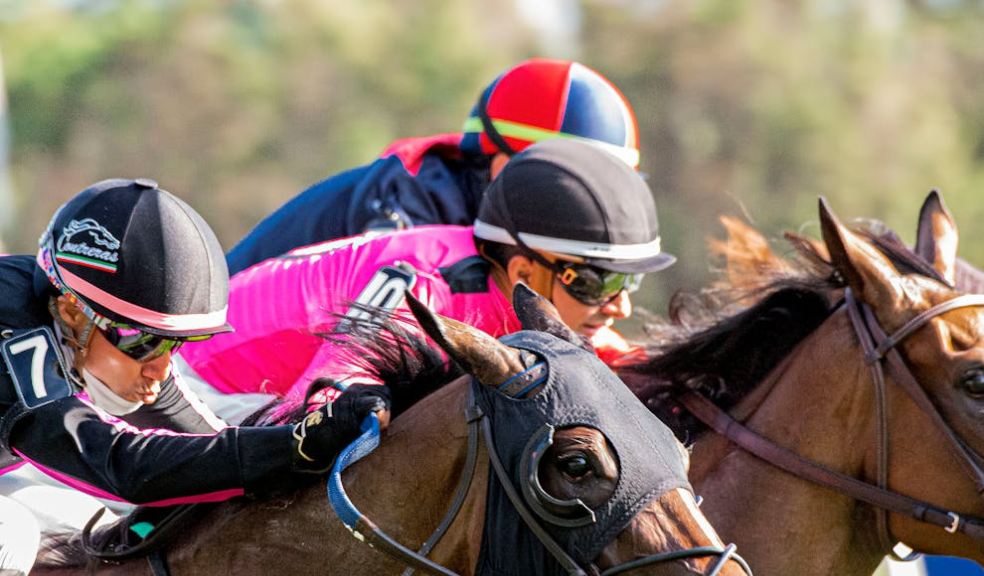
Exeter Racecourse: history and heritage
Exeter Racecourse has been a UK National Hunt staple for hundreds of years, with the Haldon Hills track claiming to be one of the oldest in the country. Widely acknowledged to have been created due to King Charles II’s love for horse racing, the Devon venue stages the annual Haldon Gold Cup and is steeped in history.
While horse racing is great fun to watch, many spectators also love placing wagers on the eventual winner or the finishing position of the first few contestants. This has always been a vital part of the Exeter Racecourse’s heritage, but advances in technology have made it even easier for bettors from across the country to get involved. Betting on horse racing is available at various UK online bookmakers, providing accessible options for racing betting enthusiasts.
Ask any of these fans, and they’ll probably put the Exeter Racecourse towards the top of the list of their favourite venues. Nestled in the picturesque landscape of the Devon countryside, on top of the Haldon Hills, the racecourse is one of the UK’s most aesthetically beautiful. Spectators gather several times a year for National Hunt races featuring 11 fences over three miles or less.
Exploring the history and heritage of the racecourse – also known as Haldon or Devon and Exeter Racecourse – paints an alluring picture of the UK horse racing tradition, particularly with National Hunt racing. We’ve investigated the key moments and interesting points in the article below.
Exeter Racecourse: one of the UK’s oldest
Charles II was a horse racing-obsessed monarch, contributing to the widespread establishment of several racecourses during the 1600s. Exeter Racecourse is one of the oldest, with its foundations being built during his reign. The heritage runs deep, with the earliest recorded meet happening in 1804. Nevertheless, most historians agree that there were probably several earlier meets that weren’t recorded.
National Hunt racing had a golden period during the early 1800s, but its popularity waned as the century drew on. By 1850, there were very few events taking place at Exeter Racecourse, but this changed once again in the early 1900s. Nowadays, the course is an important fixture on a rejuvenated National Hunt circuit.
And it’s not just horse racing that makes the venue a notable heritage site – Exeter Racecourse was also the site of Devon’s last official duel, and one of the last duels in the UK proper. Peter Hennis and Sir John Jeffcot drew pistols over Hennis allegedly spreading gossip, with the doctor later succumbing to the injuries sustained by Jeffcot’s first shot. The judge fled to Sierra Leone, where he played an instrumental part in ending the transatlantic slave trade. He later became the first judge of the Supreme Court of South Australia.
Exeter Racecourse was also sadly the site of three-time Cheltenham Gold Cup winner Best Mate’s death from a suspected heart attack. The legendary horse is commemorated with a statue and a bar named in his honour.
A quick history of Exeter Racecourse
Exeter Racecourse’s roots can be traced back to the 16th century, when organisers established early races on the top of the Haldon Hills. At first an informal venue that was quickly legitimised by the racing-mad Charles II, the course was originally known to most people as Haldon Racecourse.
While the first written evidence of racing meets wasn’t until 1804, most experts agree that early events were held sporadically in the 1700s. In any case, the 19th century was the start of a golden period for Exeter Racecourse, and one that would put it firmly on the map. The course hosted prestigious races such as the Exeter Cup and Devon Handicap, placing it as arguably the most important track in the South West.
National Hunt racing recovered from a slight fall in popularity in the mid-19th century, with the Victorian era bringing about multiple high-profile changes. This included a brand-new grandstand, opened in 1911 at the cost of £1,000, which is around £130,000 in today’s money.
By the 21st century, Exeter Racecourse had three large grandstands, upping the venue’s capacity and marking it as one of the largest and most popular courses in the country. Nowadays, the Haldon Gold Cup is the most prestigious race in the calendar, notable for famous winners such as Cue Card and Politologue.
Devon sports heritage
Exeter Racecourse is far from the only example of Devon sporting heritage. The county has historically made good use of its rolling fields and beautiful landscape, with everything from rugby to tennis being well represented. The Tiverton youth football team recently earned a funding round from a local police initiative, helping to continue the county’s impressive sporting heritage.
Other famous UK racecourses
Here are a few other famous UK racecourses operating alongside Exeter Racecourse, helping to uphold and enhance UK horse racing heritage:
- Ascot Racecourse: The legendary site of the Royal Ascot meeting and arguably the world’s most prestigious racecourse, Ascot is renowned for its elegant atmosphere, luxurious facilities and emphasis on fashion. It also holds key races such as the Gold Cup and the Queen Anne Stakes.
- Cheltenham Racecourse: One of the only National Hunt courses that can stake a claim to being more popular than Exeter Racecourse, Cheltenham is renowned for one of the most exciting meets on the UK calendar, the Cheltenham Festival.
- Newmarket Racecourse: Considered UK horse racing’s spiritual home, Newmarket Racecourse holds various races during the year, including the 1000 Guineas and 2000 Guineas.












